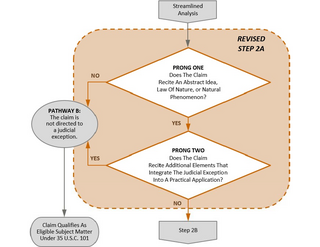Related Research Articles
An electricity market is a system that enables the exchange of electrical energy, through an electrical grid. Historically, electricity has been primarily sold by companies that operate electric generators, and purchased by consumers or electricity retailers.

Automatic meter reading (AMR) is the technology of automatically collecting consumption, diagnostic, and status data from water meter or energy metering devices and transferring that data to a central database for billing, troubleshooting, and analyzing. This technology mainly saves utility providers the expense of periodic trips to each physical location to read a meter. Another advantage is that billing can be based on near real-time consumption rather than on estimates based on past or predicted consumption. This timely information coupled with analysis can help both utility providers and customers better control the use and production of electric energy, gas usage, or water consumption.
Fixed income refers to any type of investment under which the borrower or issuer is obliged to make payments of a fixed amount on a fixed schedule. For example, the borrower may have to pay interest at a fixed rate once a year and repay the principal amount on maturity. Fixed-income securities can be contrasted with equity securities that create no obligation to pay dividends or any other form of income. Bonds carry a level of legal protections for investors that equity securities do not: in the event of a bankruptcy, bond holders would be repaid after liquidation of assets, whereas shareholders with stock often receive nothing.
Weather derivatives are financial instruments that can be used by organizations or individuals as part of a risk management strategy to reduce risk associated with adverse or unexpected weather conditions. Weather derivatives are index-based instruments that usually use observed weather data at a weather station to create an index on which a payout can be based. This index could be total rainfall over a relevant period—which may be of relevance for a hydro-generation business—or the number where the minimum temperature falls below zero which might be relevant for a farmer protecting against frost damage.
The software patent debate is the argument about the extent to which, as a matter of public policy, it should be possible to patent software and computer-implemented inventions. Policy debate on software patents has been active for years. The opponents to software patents have gained more visibility with fewer resources through the years than their pro-patent opponents. Arguments and critiques have been focused mostly on the economic consequences of software patents.
State Street Bank and Trust Company v. Signature Financial Group, Inc., 149 F.3d 1368, also referred to as State Street or State Street Bank, was a 1998 decision of the United States Court of Appeals for the Federal Circuit concerning the patentability of business methods. State Street for a time established the principle that a claimed invention was eligible for protection by a patent in the United States if it involved some practical application and, in the words of the State Street opinion, "it produces a useful, concrete and tangible result."
Business method patents are a class of patents which disclose and claim new methods of doing business. This includes new types of e-commerce, insurance, banking and tax compliance etc. Business method patents are a relatively new species of patent and there have been several reviews investigating the appropriateness of patenting business methods. Nonetheless, they have become important assets for both independent inventors and major corporations.

The Office of Gas and Electricity Markets (Ofgem), supporting the Gas and Electricity Markets Authority, is the government regulator for the electricity and downstream natural gas markets in Great Britain. It was formed by the merger of the Office of Electricity Regulation (OFFER) and Office of Gas Supply (Ofgas).
An energy derivative is a derivative contract based on an underlying energy asset, such as natural gas, crude oil, or electricity. Energy derivatives are exotic derivatives and include exchange-traded contracts such as futures and options, and over-the-counter derivatives such as forwards, swaps and options. Major players in the energy derivative markets include major trading houses, oil companies, utilities, and financial institutions.
Scams in intellectual property include scams in which inventors and other rights holders are lured to pay money for an apparently official registration of their intellectual property, or for professional development and promotion of their ideas, but do not receive the expected services.
Weather risk management is a type of risk management done by organizations to address potential financial losses caused by unusual weather.

In re Bilski, 545 F.3d 943, 88 U.S.P.Q.2d 1385, was an en banc decision of the United States Court of Appeals for the Federal Circuit (CAFC) on the patenting of method claims, particularly business methods. The court affirmed the rejection of the patent claims involving a method of hedging risks in commodities trading, as non-patentable subject matter. Most importantly, the Court concluded, that machine-or-transformation test "was proper test to apply to determine patent-eligibility of process", and that the “useful, concrete and tangible result” of State Street Bank v. Signature Financial Group and AT&T Corp. v. Excel Communications, Inc. should no longer be relied upon.

In re Ferguson, 558 F.3d 1359 is an early 2009 decision of the United States Court of Appeals for the Federal Circuit, affirming a rejection of business method claims by the United States Patent and Trademark Office (USPTO). One of the first post-Bilski decisions by a Federal Circuit panel, Ferguson confirms the breadth of the en banc Bilski opinion's rejection of the core holdings in State Street Bank & Trust Co. v. Signature Financial Group, Inc.
Bilski v. Kappos, 561 U.S. 593 (2010), was a case decided by the Supreme Court of the United States holding that the machine-or-transformation test is not the sole test for determining the patent eligibility of a process, but rather "a useful and important clue, an investigative tool, for determining whether some claimed inventions are processes under § 101." In so doing, the Supreme Court affirmed the rejection of an application for a patent on a method of hedging losses in one segment of the energy industry by making investments in other segments of that industry, on the basis that the abstract investment strategy set forth in the application was not patentable subject matter.
AT&T Corp. v. Excel Communications, Inc., 172 F.3d 1352 was a case in which the United States Court of Appeals for the Federal Circuit reversed the decision of the United States District Court for the District of Delaware, which had granted summary judgment to Excel Communications, Inc. and decided that AT&T Corp. had failed to claim statutory subject matter with U.S. Patent No. 5,333,184 under 35 U.S.C. § 101. The United States Court of Appeals for the Federal Circuit remanded the case for further proceedings.

The Leahy–Smith America Invents Act (AIA) is a United States federal statute that was passed by Congress and signed into law by President Barack Obama on September 16, 2011. The law represents the most significant legislative change to the U.S. patent system since the Patent Act of 1952 and closely resembles previously proposed legislation in the Senate in its previous session.
Alice Corp. v. CLS Bank International, 573 U.S. 208 (2014), was a 2014 United States Supreme Court decision about patent eligibility of business method patents. The issue in the case was whether certain patent claims for a computer-implemented, electronic escrow service covered abstract ideas, which would make the claims ineligible for patent protection. The patents were held to be invalid, because the claims were drawn to an abstract idea, and implementing those claims on a computer was not enough to transform that abstract idea into patentable subject matter.
Versata Development Group, Inc. v. SAP America, Inc., 793 F.3d 1306, is a July 2015 decision of the Federal Circuit affirming the final order of the Patent Trial and Appeal Board (PTAB), the recently created adjudicatory arm of the United States Patent and Trademark Office (USPTO), invalidating as patent ineligible the claims in issue of Versata's U.S. Patent No. 6,553,350. This was the first case in the Federal Circuit reviewing a final order in a Covered Business Method (CBM) invalidation proceeding under the America Invents Act (AIA). The case set an important precedent by deciding several unsettled issues in the interpretation of the CBM provisions of the AIA>, including what are business-method patents under the AIA and whether the AIA authorizes the PTO to hold such patents invalid in CBM proceedings on the ground that they are patent ineligible under 35 U.S.C. § 101 as "abstract ideas."
Volume risk refers to production- or sales volumes materially and adversely deviating from their expected quantities. The term will have context specific applicability.

Patentable subject matter in the United States is governed by 35 U.S.C. 101. The current patentable subject matter practice in the U.S. is very different from the corresponding practices by WIPO/Patent Cooperation Treaty and by the European Patent Office, and it is considered to be broader in general.
References
- ↑ Lucchetti, Aaron (6 November 1997). "Cold Winter on the Way? Some Consumers Bet on It". The Wall Street Journal .
- ↑ "Pittsburgh Post-Gazette – Google News Archive Search". news.google.com.[ permanent dead link ]
- ↑ "WeatherWise press release mentioning that Rand Warsaw is CEO. Jan 27, 2005". Archived from the original on July 18, 2011. Retrieved August 22, 2009.
- ↑ "Appendix of In re Bernard L. Bilski and Rand A. Warsaw, Text of patent application serial number 08/833892, US Court of Appeals for the Federal Circuit, 2007" (PDF).[ permanent dead link ]
- ↑ "WeatherWise News page announcing different patent applications and issued patents". Archived from the original on 2008-11-20. Retrieved 2009-08-22.
- ↑ Belkin, Lisa (10 May 1984). "UTILITY BILL OPTION: LEVELIZED PAYMENT". The New York Times.
- ↑ "Law.com". Law.com.